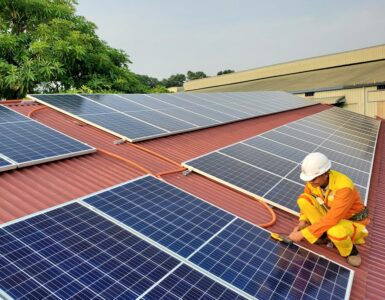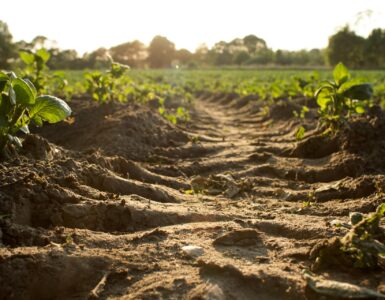
You go to a restaurant, and ask the waiter: What are the food choices available in the menu?
Waiter: Ceaser Salad with 60 grams of CH4, 120 grams of NO2, 20 grams O3. Then we have Pancake with 180 grams NO2, if you want to add chocolate then that would 30 grams of CO2 extra…
You can also try our chef special, Lasagna which has 20 grams of CH4, 45 grams of NO2, 70 grams O3, and a sprinkle of NO2.
Perplexed with the conversation?
Firstly, for the uninitiated, CH4 is Methane, NO2 is nitrous oxide, O3 is methane and CO2 is Carbon-di-oxide. Popularly known as greenhouse gases (GHG).
Secondly, a US-based restaurant chain, Just Salad recently announced plans to add carbon footprint to its menu.
Thirdly, the greenhouse gas numbers in the above mentioned hypothetical example were grossly inaccurate.
Now, coming back to the second point. The New York-headquartered Just Salad is a chain of fast-casual restaurants that serves salads, wraps, smoothies, soups, etc. and by offering carbon labeling on the menu, it becomes the first US restaurant chain to do so.
The carbon label for each menu item at Just Salad will be calculated in partnership with an MBA team from New York University’s Stern School of Business.
What’s the Logic?
As we all know, the food that we eat every day does not grow in the grocery stores. It follows a laborious process – farmer buying seeds, cultivation, irrigation, pesticides, packaging the food, processing, transportation are some of the major activities that happen in the process.
The activities consume energy, for some food types more, while for some less.
Then, it also depends on the distance the food has to travel as part of transport and logistics to make it available on your plate. If it is locally produced and consumed, then climate impact is significantly low. However, the contribution of transport in the overall carbon footprint of food production is significantly low.
Food production emissions consist mainly of carbon dioxide, nitrous oxide, and methane. As per research, the food system accounts for around 25% of the world’s total climate footprint, with maximum emissions generated from the meat-based industry.
That is the reason, the people are moving towards vegan diets and plant-based meat substitutes.In the last 6-7 years, the plant-based market has grown exponentially, led by companies from the US, UK, Canada, China, and India.
Coming back to the Just Salad case, by indicating the total estimated GHG emissions associated with the meal, the foodies will be able to compare the environment-friendliness of the meal.
So how will it help?
- The more aware and climate-conscious people might avoid the menu items which are higher on GHG emitters.
- Discussing food and the climate impact on a dinner/lunch table would invoke reactions, but at least it will bring awareness towards the environment.
- Consumers might demand similar action from other companies. This might propel the industry powerhouses to become more climate-conscious and come up with sustainable methods in food production.
- Each small action helps in the overall fight against climate change.
What Just Salad did is not new, there are other carbon footprint examples as well
Just like 10-15 years back, when companies started to put nutrition values, now there is a new crop of companies that have started enabling climate footprint labels of their products.
Allbirds, a US-based sustainable footwear company, calculates the carbon footprint of every sneaker that they manufacture. They also are making it a point to leverage the raw materials from environment-friendly regions and use recycled waste.
Sweden-based Oatly, that makes drinks and food using fiber-rich Oats, is one of the leaders in the plant-based milk category. The company started to disclose the amount of carbon dioxide equivalent that is emitted as a result of the production of its dairy alternative drinks from early 2019.
Besides the carbon footprint, Oatly lists all the suppliers and origins of its products’ ingredients. Consumers can even find out who supplied the added potassium iodide and where it was produced, a feature which is very uncommon in the food industry. The company partners with data provider CarbonCloud to calculate the greenhouse gas emissions that the manufacturing of its products causes. – global garland
The UK based Quorn, a meat-free alternative company, has started to incorporate carbon footprints on its popular products from June 2020 onwards.
Expanding the Context of Carbon Footprint
Carbon footprint of the products are the measure of emissions of gases that cause climate change into the atmosphere. The carbon footprint can also be measured for an individual, building, company, or country.
Coal-based power consumption in the homes and buildings, industrial activities in addition to the transport sector – make up the largest proportion of the carbon footprint.
Other arguments and Final Words
- Now whether 0.75 grams of CO2 is good for the environment or bad, who knows.
- If I keep reading the carbon emissions of the food, I will die with guilt or hunger.
- Will somebody stare or judge me, if I order a meal with a higher carbon footprint?
- What is the accuracy of these numbers?
- What about the lights, air conditioning in the restaurant, is that included as well?
These are valid conundrums, but we have the option to disregard the larger message and carry on with a normal routine. There is anyway a popular Subway, McDonald’s, or KFC down the street.
Or, applaud the initiative.
The labeling of the carbon footprint from companies like Just Salad, Quorn, Oatly, and Allbirds is small step to bring awareness on the lifestyle choices. The objective is to give you information on the environmental impact of a product and how the purchases can have detrimental effects on the environment.
Obviously we need food, and we cannot grow everything at home. So we have to go out and pick what is available in the grocery stores or a restaurant.
If we use public transport or use a bicycle, we are making a small contribution to reducing air pollution.
If we do not use palm oil and consume less of a meat-based diet, fewer trees will be chopped off, saving the wildlife and eco-system.
If we switch off the light and air conditioner when not in use, little less methane will go into the environment.
If we purchase a product that causes less destruction to the planet, we might be able to provide a better life for future generations.
In the end, it is a choice…






Add comment